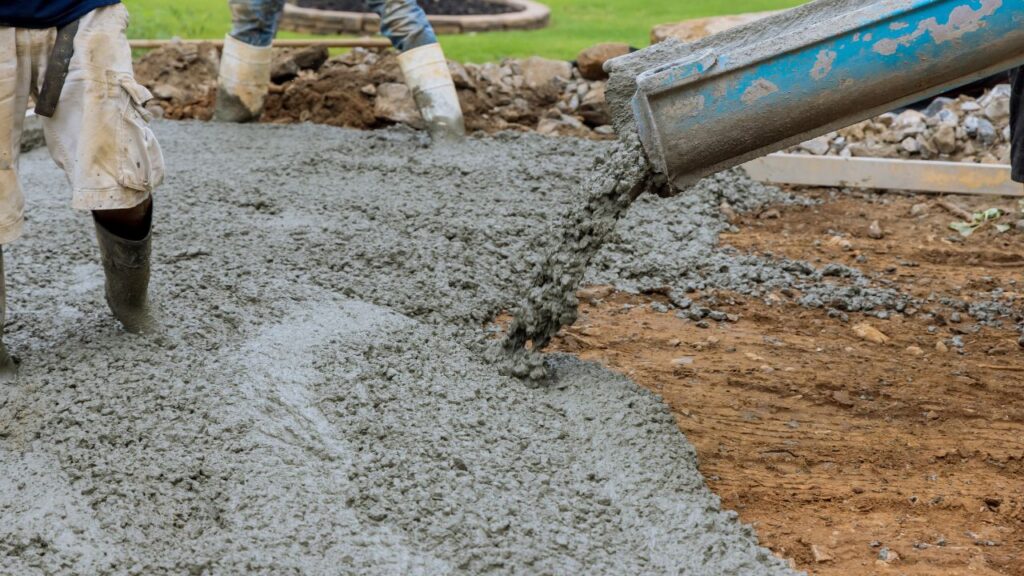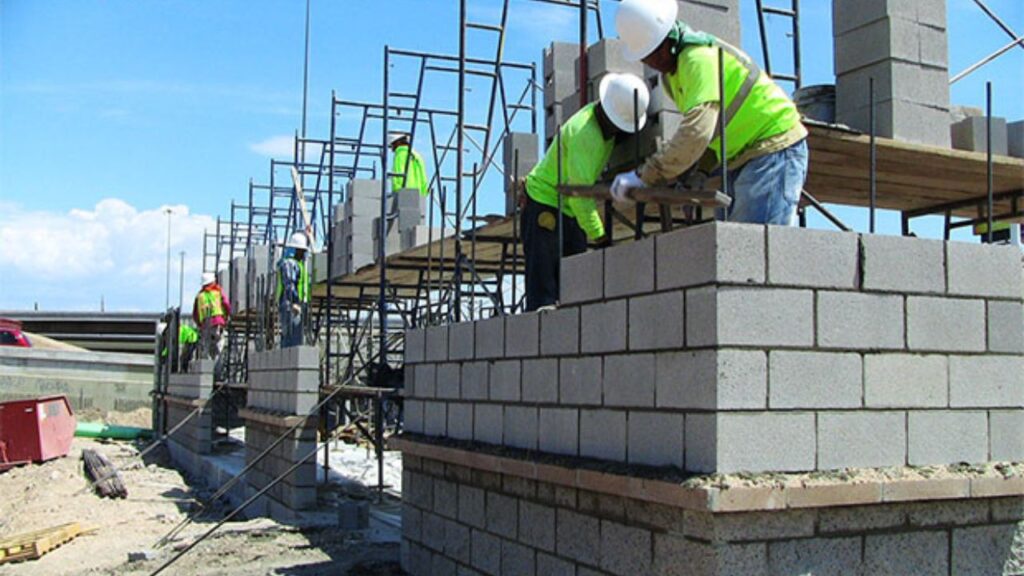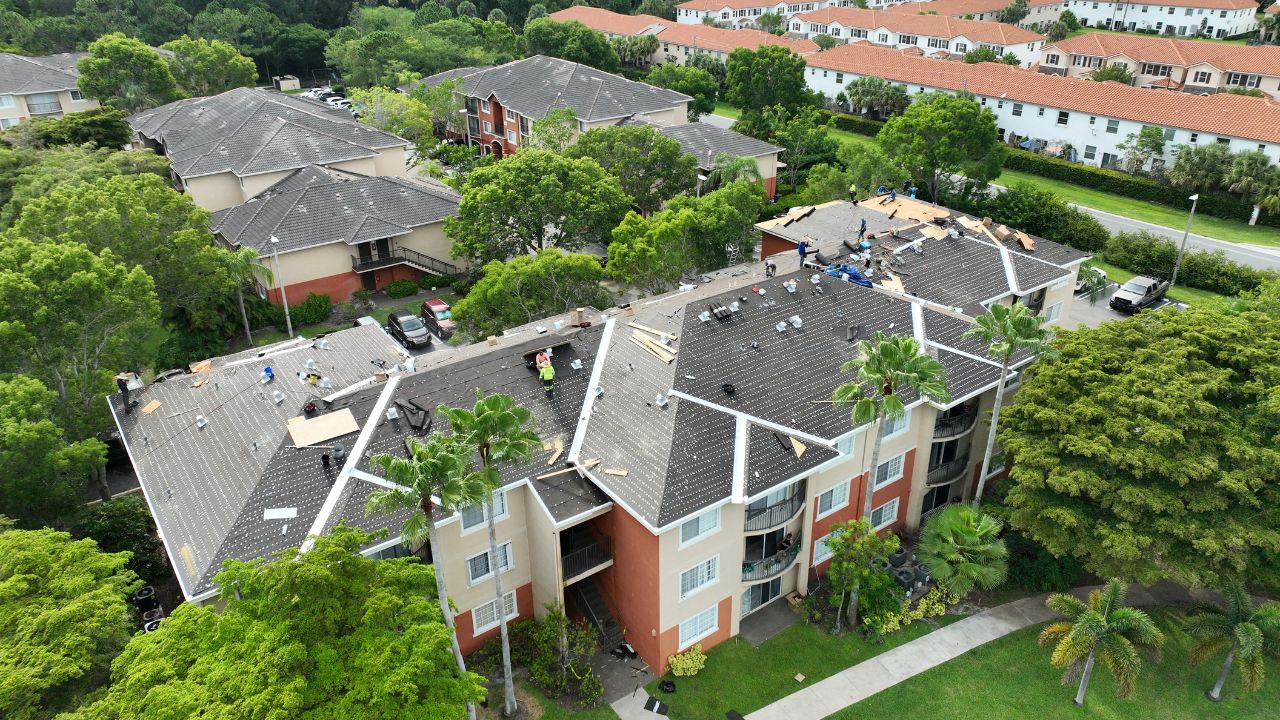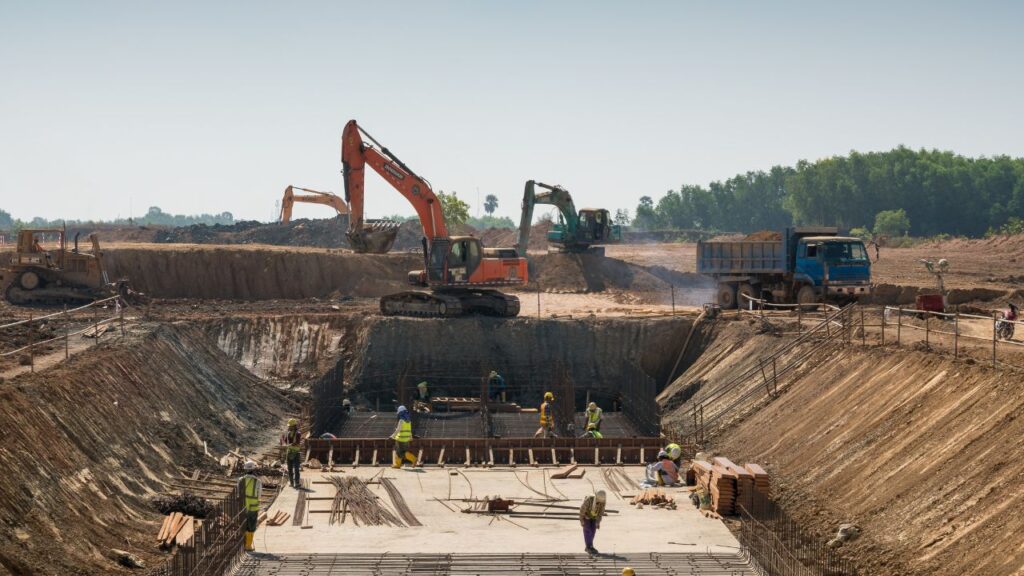Earthwork is one of the most fundamental aspects of construction, laying the groundwork (literally) for all subsequent phases. Accurate quantity takeoff is indispensable for determining the amount of excavation, filling, and grading required. With proper estimates, contractors can plan effectively, avoid costly errors, and stay within budget.
At Estimate Florida Consulting, we leverage advanced tools and methodologies to deliver precise earthwork estimates, saving time and resources for your construction projects.
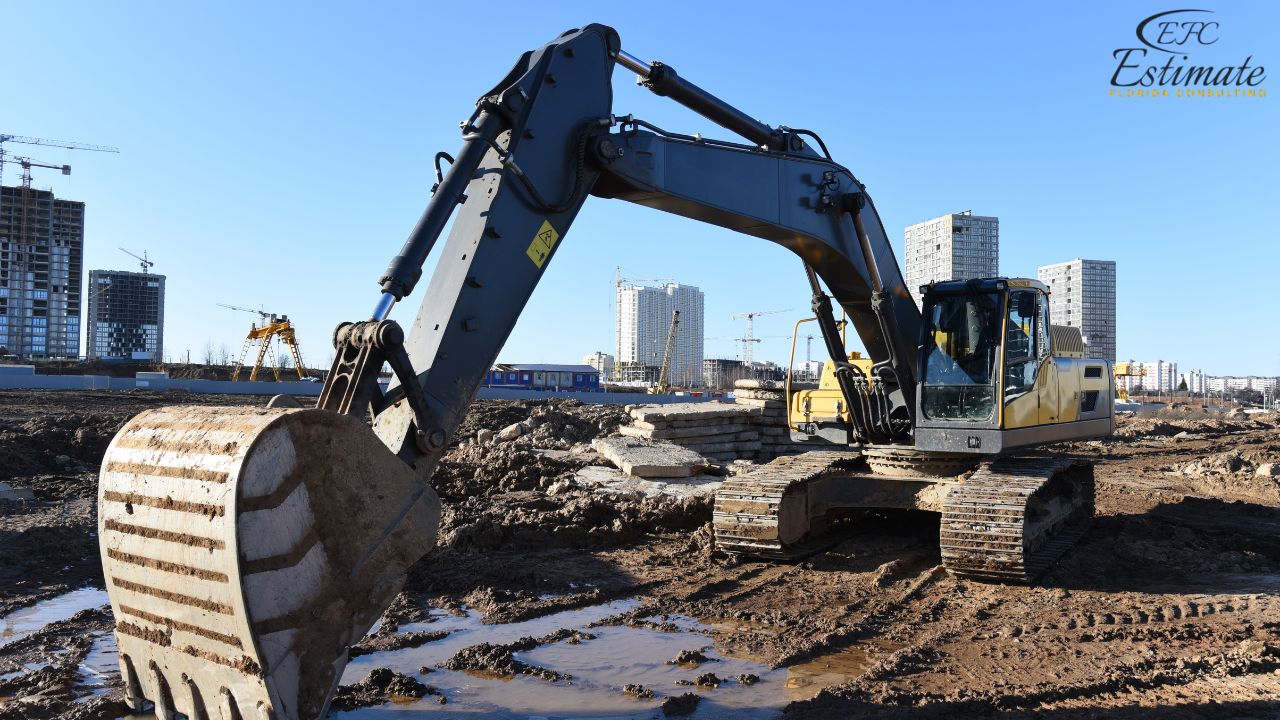
What is Earthwork Quantity Takeoff?
Earthwork quantity takeoff refers to the process of calculating the volume of earth to be excavated, filled, or graded in a construction project. These calculations are vital for cost estimation, resource planning, and project scheduling.
Key elements involved in earthwork quantity takeoff include:
- Cut and Fill Analysis: Determining the amount of soil to be removed (cut) or added (fill) to achieve the desired grade.
- Volume Calculation: Using methods like grid, cross-section, or contour to measure earth volumes.
- Material Classification: Identifying soil types and their impact on excavation and compaction processes.
Earthwork Quantity Takeoff
Earthwork quantity takeoff is a critical aspect of construction planning, involving the accurate calculation of materials and activities needed to prepare a site for construction. The following are key components of earthwork takeoff:
Excavation
Excavation is the process of removing soil, rock, or other materials to prepare the site for construction activities such as laying foundations, creating basements, or installing utilities. The volume of excavation required depends on factors such as the design of the project, the depth and type of foundations, and the existing soil conditions. Accurate excavation takeoff involves calculating the cubic yards or meters of material to be removed, taking into account slopes, over-excavation needs, and any material that must be stockpiled or hauled away. Soil type also plays a role, as harder or rocky soils may require specialized equipment, which can increase costs.
Filling
Filling involves adding soil, gravel, sand, or other materials to raise ground levels, fill voids, or create stable surfaces for construction. The quantity of fill material required depends on the site’s topography and the design specifications, including elevation adjustments and load-bearing requirements. Proper compaction is crucial during filling to ensure stability, prevent future settlement, and meet engineering standards. The takeoff process must account for material compaction rates, as the loose volume of fill material is typically greater than the compacted volume. Additionally, projects requiring imported fill material must include transportation and sourcing costs in the estimate.
Site Grading
Site grading is the process of leveling or shaping the land to meet design specifications, ensuring proper drainage, and creating a solid base for construction. Grading takeoff calculations include cut-and-fill balancing, where excavated material is redistributed to minimize the need for imported fill. Accurate grading ensures effective water runoff management, preventing erosion or pooling that could jeopardize the construction. The complexity of grading depends on the site’s natural contours and the project’s design. Advanced tools such as 3D modeling software are often used to create precise grading plans and calculate the required earthwork quantities.
Factors Affecting Earthwork Quantities
Several factors play a critical role in determining earthwork quantities, influencing both the volume of materials and the methods required for site preparation. These factors must be carefully evaluated to ensure accurate takeoffs and efficient project execution.
Get Acquainted with Estimation
Mastering Bids: 12 Pro-Level Bidding Tips for Construction Managers
Maximize Profits: Budgeting Hacks for Big Construction Projects
Soil Conditions
The type and stability of soil at the construction site are among the most significant factors affecting earthwork quantities. Loose or unstable soils, such as clay or silt, may require additional excavation and reinforcement measures, such as soil stabilization or the installation of retaining structures. In contrast, compact and stable soils, like sandy or gravelly soils, generally simplify excavation and filling processes. Soil conditions also affect compaction requirements, as certain types of soil may require multiple passes with heavy equipment to achieve the desired density. Moreover, unforeseen challenges, such as encountering rock layers or groundwater, can increase the scope and cost of earthwork operations.
Site Accessibility
Site accessibility directly impacts the efficiency of earthwork activities. Sites with easy access for heavy machinery and trucks allow for faster excavation, filling, and grading operations. Conversely, restricted or difficult access, such as urban sites with narrow roads or remote locations with rough terrain, can limit the use of large equipment, leading to slower progress and increased costs. Accessibility also influences the logistics of material transportation, as difficult-to-reach sites may incur higher hauling costs for importing fill materials or disposing of excavated material.
Project Design
The complexity of the project design significantly affects earthwork volumes and costs. Designs that include multiple levels, basements, or retaining walls require more extensive excavation and filling. For instance, projects with underground parking or deep foundations will demand greater excavation depths, increasing the quantity of material to be removed. Similarly, retaining walls may necessitate additional backfill and reinforcement materials to stabilize the structure. Designs that require specific site grading profiles or landscaping features further add to earthwork quantities by necessitating precise cut-and-fill balancing to achieve the desired contours.
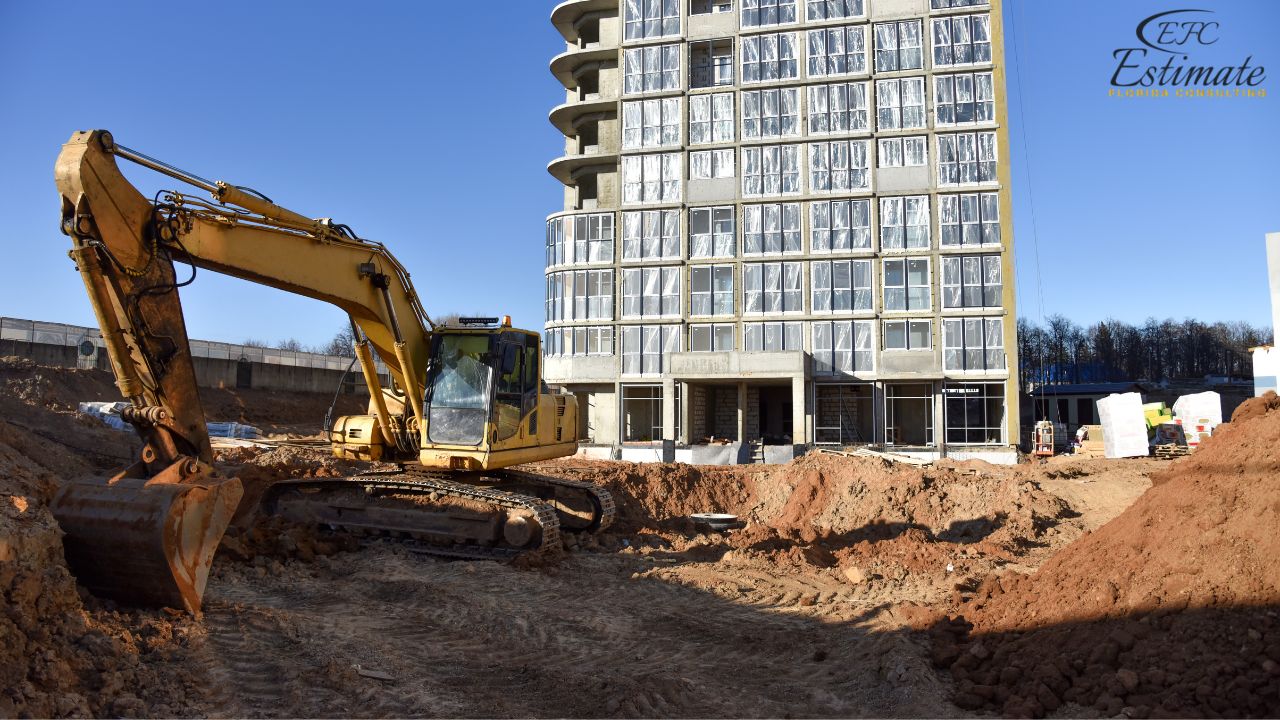
Best Practices for Accurate Earthwork Estimation
Accurate earthwork estimation is essential for successful construction project planning and execution. By following these best practices, contractors can ensure precise calculations, minimize risks, and optimize resource allocation.
Conduct a Thorough Site Assessment
A comprehensive site assessment is the foundation of accurate earthwork estimation. Understanding the topography, soil conditions, and site accessibility is crucial for predicting excavation, filling, and grading requirements. For example, rocky or loose soils may require specialized equipment or additional labor, while steep slopes may demand more extensive grading efforts. An in-depth site evaluation also helps identify potential challenges, such as underground utilities or drainage issues, that could affect the project scope.
Use Reliable Software
Advanced earthwork estimation software is invaluable for improving accuracy and reducing human error. Tools like 3D modeling and digital takeoff software allow estimators to visualize the site and calculate cut-and-fill quantities with precision. These programs can simulate various scenarios, helping to identify the most cost-effective methods for excavation and grading. Reliable software also ensures consistency in calculations, especially for large or complex projects, where manual methods may fall short.
Validate Data with Surveys
Cross-checking estimates with on-site surveys adds a layer of precision to earthwork calculations. Topographic and geotechnical surveys provide real-world data on site elevations, soil composition, and subsurface conditions. This information can be integrated into digital models to refine calculations further. Validating data with surveys helps ensure that the estimates align closely with the actual site conditions, reducing the likelihood of costly adjustments during construction.
Account for Contingencies
Including a buffer for unforeseen challenges is a best practice in earthwork estimation. Factors such as adverse weather, unexpected soil conditions, or equipment breakdowns can disrupt project timelines and increase costs. A contingency allowance—typically 5-10% of the estimated earthwork quantities—provides flexibility to address these uncertainties without compromising the project’s budget or schedule.
Engage Experienced Professionals
Enlisting skilled professionals with expertise in earthwork estimation can significantly enhance the accuracy of calculations. Experienced estimators understand how to interpret design plans, anticipate challenges, and apply best practices in measurement and planning. Their insights, combined with advanced tools and thorough site assessments, ensure a comprehensive and reliable estimation process.
Win More Projects With Us
Best Practices for Accurate Earthwork Estimation
Accurate earthwork quantity estimation plays a pivotal role in the success of any construction project. By providing detailed insights into the scope of excavation, filling, and grading activities, it helps streamline various aspects of project planning and execution. Here are the key reasons why precise earthwork estimation is essential:
Budgeting
Earthwork estimation provides a clear understanding of the costs associated with excavation, filling, and grading, enabling accurate budget planning. Knowing the quantity of materials needed—such as soil, gravel, or sand—along with associated labor and equipment costs, helps contractors and stakeholders avoid budget overruns. Precise estimates also ensure that project bids are competitive while safeguarding profitability.
Resource Allocation
A detailed earthwork estimation aids in effective planning of machinery, labor, and material requirements. By knowing the exact quantities of excavation and fill materials, contractors can allocate the appropriate equipment, such as excavators, loaders, and graders, to optimize productivity. Similarly, labor needs can be forecasted accurately, ensuring the right workforce is available when needed, preventing delays or inefficiencies.
Project Scheduling
Earthwork activities are often among the first steps in a construction project, making accurate estimation critical for aligning these tasks with the overall timeline. A reliable estimate ensures that excavation and grading tasks are completed on time, preventing delays in subsequent construction phases like foundation laying or utility installation. This proactive scheduling minimizes disruptions and keeps the project on track.
Risk Mitigation
Accurate earthwork estimation identifies potential challenges early in the planning phase, reducing the likelihood of unforeseen issues. For instance, unsuitable soil conditions or excessive cut-and-fill requirements can pose significant risks to the project’s timeline and budget. Identifying these factors beforehand allows for the development of mitigation strategies, such as soil stabilization techniques or alternative grading plans, ensuring a smoother construction process.
Enhanced Decision-Making
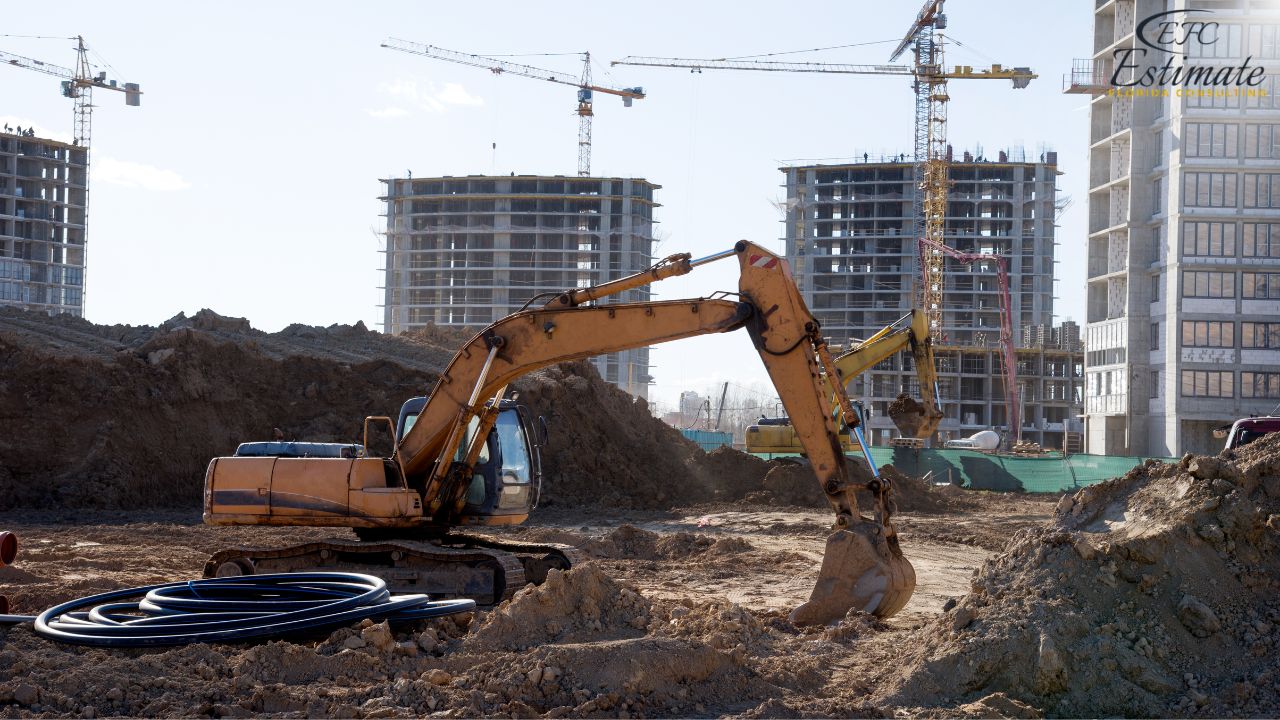
Detailed earthwork estimates provide valuable data that supports informed decision-making. For example, contractors can analyze whether on-site material can be reused for filling or if additional materials need to be sourced. Similarly, insights into equipment needs and labor hours enable better logistical planning and resource optimization, contributing to a more efficient and cost-effective project execution.
Estimate Florida Consulting Services
At Estimate Florida Consulting, we specialize in delivering professional earthwork quantity takeoff services to help contractors, developers, and project managers achieve their construction goals. With a focus on accuracy and efficiency, our team offers a range of services designed to meet the specific needs of your project. Here’s what we provide:
Detailed Quantity Takeoffs
Our detailed quantity takeoff services include comprehensive calculations for excavation, filling, and grading activities. Using advanced software and industry best practices, we ensure precise measurements for every aspect of earthwork. Whether it’s a residential site with minimal grading or a large commercial project with extensive cut-and-fill requirements, we provide the data you need to plan effectively.
Cost Estimation
Accurate budgeting is critical to the success of any construction project. Our cost estimation services deliver reliable financial insights, factoring in material costs, labor, equipment usage, and contingency allowances. With our expertise, you can develop realistic budgets, prepare competitive bids, and avoid unexpected expenses during the project.
3D Modeling and Visualization
We leverage cutting-edge 3D modeling and visualization tools to bring your project to life. These tools allow stakeholders to visualize the site’s grading and earthwork needs, making it easier to understand the scope of work and identify potential challenges. With 3D models, you can explore various scenarios and ensure the most efficient approach to site preparation.
Customized Solutions
At Estimate Florida Consulting, we recognize that every project is unique. That’s why we offer tailored services to suit the specific requirements of residential, commercial, and infrastructure projects. From small-scale developments to large civil engineering projects, our team adjusts its approach to meet your goals and deliver results that align with your vision.
Professional Expertise and Support
Our team of experienced estimators and construction professionals is committed to providing exceptional service. We work closely with clients to ensure their project requirements are fully understood and addressed. From initial planning to final delivery, our experts are here to guide you through the estimation process.
Download Template For Earthwork Quantity Project Breakdown
- Materials list updated to the zip code
- Fast delivery
- Data base of general contractors and sub-contractors
- Local estimators

Challenges in Earthwork Quantity Takeoff
Earthwork quantity takeoff is a critical yet complex aspect of construction planning. Various challenges can arise, impacting the accuracy and efficiency of the estimation process. Addressing these challenges early on is essential for minimizing risks and ensuring successful project execution.
1. Inconsistent Soil Conditions
Variations in soil type and stability across the construction site can complicate earthwork calculations. Factors like soil shrinkage and swell must be accounted for accurately to determine the volumes of cut and fill materials required. For instance, clay soils tend to expand when wet and contract when dry, while sandy soils maintain more stable volumes. Failing to consider these characteristics can result in over- or underestimating material needs, leading to budget overruns or delays in the construction timeline.
2. Changes in Project Scope
Modifications to the project scope or site plans during construction can necessitate recalculations of earthwork quantities. For example, adding basements, retaining walls, or changes in grading specifications can alter the amount of excavation and filling required. These changes may require estimators to revisit initial calculations, potentially delaying project milestones. Keeping track of evolving project details and maintaining flexibility in the estimation process are critical to managing this challenge.
3. Data Accuracy
Errors in site surveys, topographic maps, or grading plans can significantly impact the accuracy of earthwork takeoff results. Inaccurate elevation data or overlooked site features may lead to incorrect calculations for cut-and-fill volumes. For example, an underestimated slope or unaccounted drainage ditch can drastically change the material requirements. Ensuring the accuracy of input data through thorough site assessments and cross-verification with reliable surveys is essential to avoid costly errors.
4. Complex Topography
Projects with irregular or steep terrain pose additional challenges for earthwork takeoff. Uneven ground requires more detailed analysis to determine optimal cut-and-fill strategies, which may involve advanced 3D modeling tools to accurately calculate volumes. Without precise tools and expertise, estimators risk underestimating the complexity of such sites, leading to logistical and budgetary issues.
5. Unforeseen Site Conditions
Unexpected conditions, such as groundwater, buried debris, or subsurface rock layers, can complicate excavation activities and disrupt the takeoff process. These issues often remain undetected during initial planning and require immediate adjustments to estimates and construction plans. Identifying these risks through detailed geotechnical surveys and contingency planning can help mitigate their impact.
Conclusion
Earthwork quantity takeoff is a foundational aspect of construction, influencing budget, resource allocation, and project timelines. By understanding the components, methods, and factors affecting earthwork estimation, stakeholders can make informed decisions and optimize their construction processes.
At Estimate Florida Consulting, we’re dedicated to providing accurate, reliable, and cost-effective takeoff services that help you achieve your project goals with confidence.
Frequently Asked Question
Earthwork quantity takeoff is the process of calculating the volume of soil or materials that need to be excavated, filled, or graded in a construction project. These calculations help in accurate budgeting, resource allocation, and project scheduling.
Earthwork takeoff ensures precise cost estimation, effective resource allocation, and streamlined project timelines. It helps contractors avoid unexpected costs, plan machinery and labor requirements, and mitigate risks.
Advanced tools like 3D modeling software, digital takeoff tools, and topographic survey data are commonly used to enhance the accuracy of earthwork quantity calculations.
Key factors include soil conditions, site accessibility, project design, topography, and unforeseen site challenges like groundwater or rock layers.
- Excavation: Calculating the volume of material to be removed.
- Filling: Determining the quantity of materials like soil or gravel needed to stabilize or level the site.
- Grading: Balancing cut-and-fill quantities to create a level surface that meets design requirements.
Soil type determines excavation difficulty and compaction needs. For example, rocky soil requires specialized equipment, while loose soils may need stabilization to prevent settlement.
Accuracy is achieved through thorough site assessments, advanced software tools, cross-verification with surveys, and accounting for contingencies in estimates.
Cut-and-fill analysis determines the volume of material to be removed (cut) or added (fill) to level a construction site, ensuring minimal material wastage and cost efficiency.
Easy site access allows for efficient use of heavy machinery, reducing costs and time. Conversely, restricted access increases complexity, slows progress, and raises costs.
Challenges include unexpected soil conditions, adverse weather, inaccurate site data, and equipment breakdowns. Including contingency allowances in estimates helps mitigate these issues.
Comprehensive Trade-Specific Estimates
At Estimate Florida Consulting, we offer detailed cost estimates across all major trades, ensuring no part of your project is overlooked. From the foundation to the finishing touches, our trade-specific estimates provide you with a complete and accurate breakdown of costs for any type of construction project.

Testimonials
What Our Clients Say
We take pride in delivering accurate, timely, and reliable estimates that help contractors and builders win more projects. Our clients consistently praise our attention to detail, fast turnaround times, and the positive impact our estimates have on their businesses.
Estimate Florida Consulting has helped us win more bids with their fast and accurate estimates. We trust them for every project!

Steps to Follow
Our Simple Process to Get Your Estimate
01
Upload Plans
Submit your project plans, blueprints, or relevant documents through our online form or via email.
02
Receive Quotation
We’ll review your project details and send you a quote based on your scope and requirements.
03
Confirmation
Confirm the details and finalize any adjustments to ensure the estimate meets your project needs.
04
Get Estimate
Receive your detailed, trade-specific estimate within 1-2 business days, ready for your project execution.




